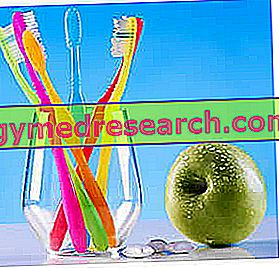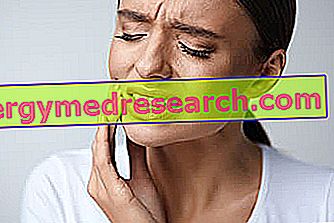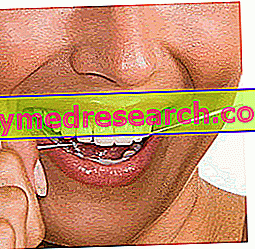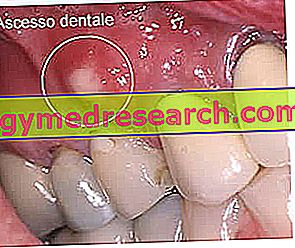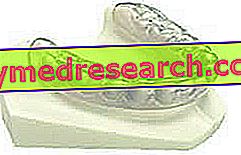Teeth The teeth are hard appendages positioned inside the oral cavity; they are considered real organs, as they are composed of living tissue, vascularization and nerve endings. Their main function is to grab, chop and chew food; secondly, they also play the role of phonetic modulators. In humans, they are 28 or 32 (based on the presence or absence of third molars, called "wisdom teeth") and their structure is organized as follows: the portion that emerges from the gum is called the crown, while the portion hidden by it is which settles in the bone is called the root
Category dental health
Watch the video X Watch the video on youtube Generality Sodium bicarbonate is widely used to whiten teeth, removing stains and making them more white and shiny, both in the professional environment (in dental offices) and in the purely domestic environment. Professional bleaching The so-called air-polishing is the classic professional whitening technique: it uses the cleaning action of a spray of water, air and bicarbonate of soda to be projected with a certain pressure on the tooth that you want to treat
Generality Together with sodium bicarbonate, sage is one of the most used whitening agents, both in the cosmetic field (preparation of toothpastes and whitening pastes), and in the purely domestic context: rubbing a fresh sage leaf directly on the tooth surface is a well-known folk remedy to get whiter teeth, giving shine and shine to your smile
Introduction to the topic Healthy eating and a healthy lifestyle are the perfect mix for halitosis prevention, an embarrassing and unpleasant phenomenon that affects both sexes of all ages. To prevent bad breath, it is not enough just to advise the use of toothpaste, toothbrush and mouthwash : it seems, in fact, that the diet greatly affects the freshness of a person's breath
Generality The dental alveolitis is an acute inflammation of the alveolus, that is the bone cavity in which the roots of the teeth lodge. In most cases, this pathology is established after a dental extraction (or dental avulsion). Alveolitis is a rather rare complication (occurs in about 1-2% of cases) and is found above all when the removal involves a tooth severely compromised by pathological processes, as can happen in the presence of deep caries, pulpits or granulomas
Dental abscess: introduction The diagnosis of dental abscess is rather easy, a simple medical history (collection of symptoms reported by the patient) is often sufficient. The subject affected by dental abscess accuses an unstoppable, pulsating and acute toothache, such as to hinder chewing or - worse still - normal daily activities and night rest
Dental abscess: key points The dental abscess is an accumulation of bacteria, white blood cells, plasma and cellular debris (pus) confined to the tissues surrounding a tooth (gum, mandibular bone or tooth pulp). Main classification Periodontal dental abscess: caused by an infection affecting the tooth supporting apparatus (gingiva, alveolar bone and ligaments) Periapical dental abscess: due to an infection of the dental pulp Causes The dental abscess is the immediate consequence of complicated caries or serious injuries, which cause purulent infection (rich in pus) of teeth or gums
What is bruxism The root of the term "bruxism" comes from the Greek word βρύχω , which literally means "teeth grinding". Bruxism is a more pronounced phenomenon during sleep and is caused by the contraction of the muscles involved in chewing; it is considered an abnormal activity not aimed at a purpose (parafunction). Bru
Introduction Bruxism, an involuntary phenomenon that involves teeth grinding, is a fairly common condition among the population, but effective remedies are still being studied. First, the patient suffering from bruxism must undergo a test to diagnose a possible pathology affecting the oral cavity: the problem could in fact derive from some pathologies (usually psychological conditions and chewing disorders)
When do the teeth fall? The fall of milk teeth is a physiological phenomenon that starts around the age of 6, with the aim of making room for permanent teeth. In medical parlance, the fall and subsequent replacement of milk teeth with permanent ones is called a trade-in . It is not possible to establish with absolute accuracy which is the ideal age for which a milk tooth should fall: while some children lose their first tooth at the age of 5, others show all 20 milk teeth still at the age of 7 years

